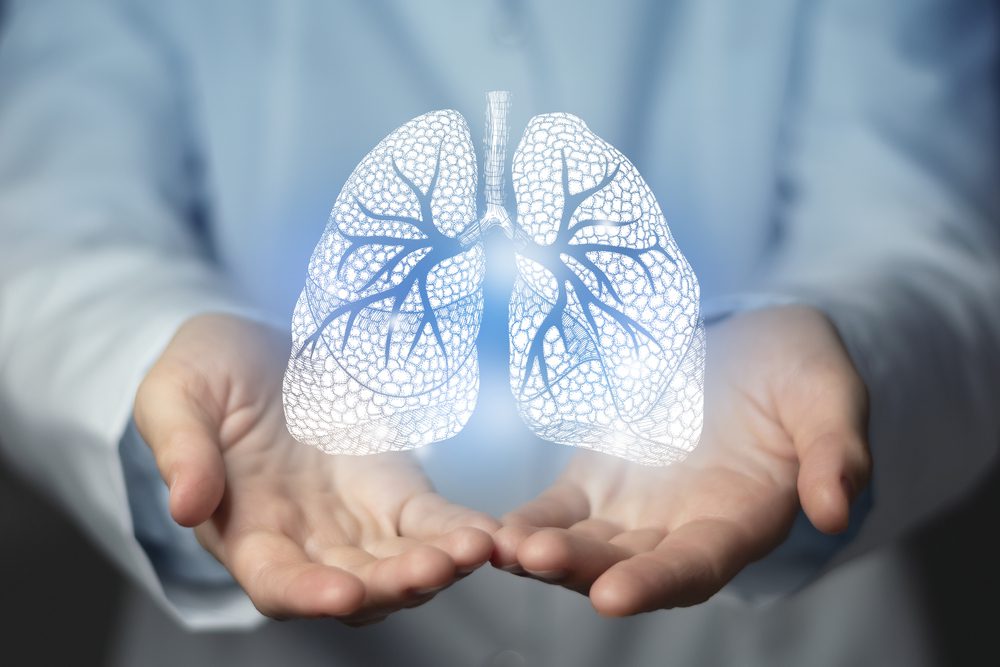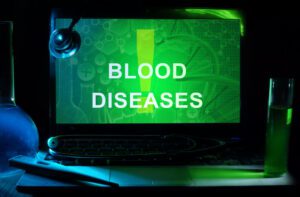COPD, or chronic obstructive pulmonary disease, is a common respiratory condition that affects millions of people worldwide. This disease is characterized by a persistent obstruction of airflow in the lungs, which can lead to a range of symptoms and complications. COPD is typically caused by long-term exposure to irritants such as cigarette smoke, air pollution, and dust.
The signs and symptoms of COPD can vary from person to person, but typically include coughing, wheezing, shortness of breath, and chest tightness. These symptoms may develop gradually over time, and can be exacerbated by factors such as exercise, cold air, and respiratory infections. In advanced cases, COPD can also lead to complications such as respiratory failure, heart problems, and lung cancer.
There are a variety of treatments available for COPD, including medications, oxygen therapy, and pulmonary rehabilitation. These treatments are designed to help manage symptoms, improve lung function, and prevent complications. With proper management and treatment, many people with COPD are able to lead active and fulfilling lives.
Causes and Risk Factors
Chronic Obstructive Pulmonary Disease (COPD) is a progressive lung disease that makes it difficult to breathe. While the exact cause of COPD is unknown, it is usually caused by long-term exposure to irritants that damage the lungs and airways.
The most common cause of COPD is smoking, including both active and passive smoking. Tobacco smoke contains harmful chemicals that can cause inflammation and damage to the lungs, leading to COPD. In fact, smoking is the leading cause of COPD, accounting for up to 85% of cases.
Exposure to air pollution, fumes, and dust can also increase the risk of developing COPD. Long-term exposure to these irritants can cause inflammation and damage to the lungs, leading to the development of COPD. In addition, exposure to secondhand smoke can also increase the risk of developing COPD.
Individuals with a family history of COPD are also at an increased risk of developing the disease. Genetics may play a role in the development of COPD, and individuals with a family history of the disease may be more susceptible to developing it themselves.
Other risk factors for COPD include long-term exposure to chemicals, such as those found in certain occupations, and exposure to air pollutants. Carbon dioxide, a common air pollutant, can also contribute to the development of COPD.
In summary, COPD is usually caused by long-term exposure to irritants that damage the lungs and airways. Smoking is the most common cause of COPD, but exposure to air pollution, fumes, and dust can also increase the risk of developing the disease. Individuals with a family history of COPD and those who are exposed to chemicals and air pollutants are also at an increased risk of developing COPD.
Symptoms and Signs
COPD is a chronic lung disease that affects millions of people worldwide. The symptoms of COPD can vary from person to person, but there are some common signs that can help identify the disease.
One of the most common symptoms of COPD is a persistent cough. This cough may produce mucus or phlegm, and it may worsen over time. In some cases, the cough may be the only symptom of COPD.
Another common symptom of COPD is shortness of breath. This may occur during physical activity or even at rest, and it may worsen over time. Some people with COPD may also experience wheezing or chest tightness.
Exacerbations, or flare-ups, are also common in people with COPD. These episodes can be triggered by infections or other irritants, and they can cause a sudden increase in symptoms. In some cases, exacerbations can be severe enough to require hospitalization.
Other symptoms of COPD may include fatigue, weight loss, and fever. These symptoms may be more common in advanced stages of the disease.
Overall, it is important to recognize the signs and symptoms of COPD early on. Early diagnosis and treatment can help slow the progression of the disease and improve quality of life. If you or someone you know is experiencing any of these symptoms, it is important to speak with a healthcare provider.
Complications and Severity
Individuals with COPD may experience complications that can worsen their condition and reduce their quality of life. The severity of COPD can vary depending on the individual and their lifestyle choices. Here are some of the complications associated with COPD:
- Infection: Individuals with COPD are at a higher risk of developing infections, particularly respiratory infections, due to the weakened state of their immune system. These infections can cause exacerbations of COPD and lead to further lung damage.
- Lung Damage: COPD can cause permanent damage to the lungs, leading to difficulty breathing and reduced lung function. This damage can be caused by long-term exposure to lung irritants such as cigarette smoke, air pollution, and chemical fumes.
- Exacerbations: COPD exacerbations occur when symptoms worsen suddenly and can be triggered by infection, air pollution, or other irritants. These exacerbations can be severe and require hospitalization.
- Heart Disease: COPD can also lead to heart disease, as the heart has to work harder to pump blood through the damaged lungs. This can lead to high blood pressure and an increased risk of heart attack and stroke.
- Lung Cancer: Individuals with COPD are at a higher risk of developing lung cancer, particularly if they are smokers or have a history of exposure to lung irritants.
- Swelling: COPD can cause inflammation and swelling in the lungs, making it even harder to breathe. This can lead to further lung damage and exacerbations.
The severity of COPD can be classified into four stages, with stage 1 being mild and stage 4 being very severe. Management of COPD involves a combination of medication, lifestyle changes, and pulmonary rehabilitation. It is important for individuals with COPD to work closely with their healthcare provider to manage their condition and prevent complications.
Diagnosis
Diagnosis of COPD is typically done by a doctor. To diagnose COPD, the doctor will ask about the patient’s medical history and symptoms. They may also perform a physical exam and order tests to evaluate lung function.
One of the most common tests used to diagnose COPD is spirometry. This test measures the amount of air a patient can exhale and how quickly they can do it. It can also help determine the severity of COPD.
In addition to spirometry, doctors may order other tests to help diagnose COPD. Chest X-rays and CT scans can be used to look for signs of lung damage or other conditions that may be causing the patient’s symptoms.
Once a patient is diagnosed with COPD, the doctor will work with them to develop a treatment plan. This may include medications to help manage symptoms and reduce inflammation in the airways. In some cases, oxygen therapy may also be necessary.
It is important for patients with COPD to work closely with their doctor to manage their condition and prevent complications. This may involve making lifestyle changes, such as quitting smoking and avoiding triggers that can worsen symptoms.
Treatment and Prevention
COPD is a chronic and progressive disease that requires ongoing management to control symptoms and prevent further lung damage. Treatment options for COPD vary depending on the severity of the disease and the individual’s overall health. In addition to medical interventions, lifestyle changes can also play a significant role in managing COPD.
Medications
Medications are often prescribed to help manage COPD symptoms. Bronchodilators, which relax the muscles around the airways, are commonly used to improve breathing. Corticosteroids, which reduce inflammation, may also be prescribed to help control exacerbations of COPD. Inhalers are a common delivery method for these medications.
Antibiotics may be prescribed if a bacterial infection is suspected as a trigger for a COPD exacerbation. In some cases, alpha-1 antitrypsin (AAT) replacement therapy may be recommended for individuals with a genetic deficiency of this protein, which can increase the risk of developing COPD.
Lifestyle Changes
Lifestyle changes can also play an important role in managing COPD. Quitting smoking is the most important step in preventing further lung damage and slowing the progression of the disease. Smoking cessation programs, nicotine replacement therapy, and prescription medications can all be effective tools in helping individuals quit smoking.
Exercise can also help improve lung function and increase energy levels. Pulmonary rehabilitation programs, which include exercise and education on managing COPD symptoms, can be helpful for individuals with more severe disease.
Proper nutrition and weight management are also important for individuals with COPD. A diet rich in protein and energy can help maintain muscle mass and improve overall health.
Supplemental Therapies
Supplemental oxygen therapy may be prescribed for individuals with severe COPD who have low oxygen levels in their blood. Oxygen can be delivered through a portable tank or concentrator.
Surgical Options
Surgical options may be considered for individuals with severe COPD who have not responded to other treatments. Bullectomy, lung volume reduction surgery, and lung transplant are all surgical options that may be considered for select individuals with COPD.
Overall, managing COPD requires a comprehensive approach that includes both medical interventions and lifestyle changes. With proper management, individuals with COPD can lead active and fulfilling lives.
Living with COPD
Living with COPD can be challenging, but there are ways to manage the symptoms and improve quality of life. People with COPD may experience shortness of breath, fatigue, coughing, and wheezing. These symptoms can make it difficult to perform daily activities, including work and exercise.
To manage COPD symptoms, it is important to avoid irritants such as cigarette smoke and air pollution. People with COPD should also take their medication as directed by their healthcare provider. In some cases, hospitalization may be necessary during a flare-up of symptoms.
Regular exercise can help improve lung function and reduce fatigue. People with COPD should work with their healthcare provider to develop an exercise plan that is safe and effective for their individual needs.
In addition to managing COPD symptoms, it is important for people with COPD to prioritize their overall health. This includes getting vaccinated for illnesses such as COVID-19 and pneumonia, as well as managing other health conditions such as high blood pressure.
Living with COPD can be challenging, but with the right treatment and lifestyle changes, it is possible to manage symptoms and improve quality of life.








